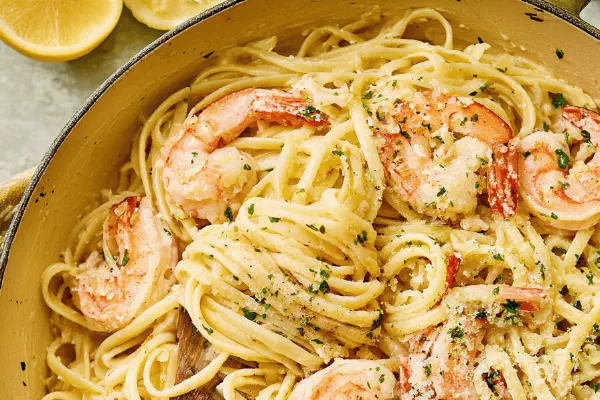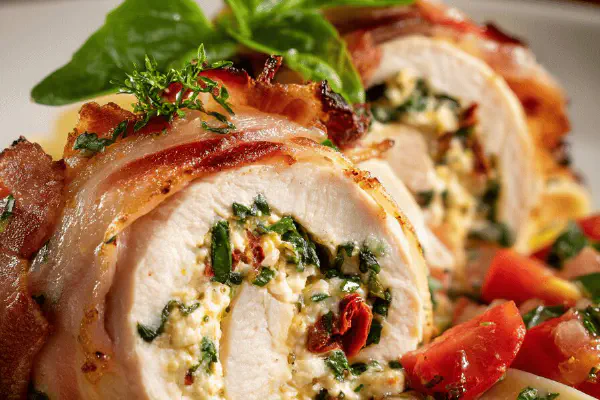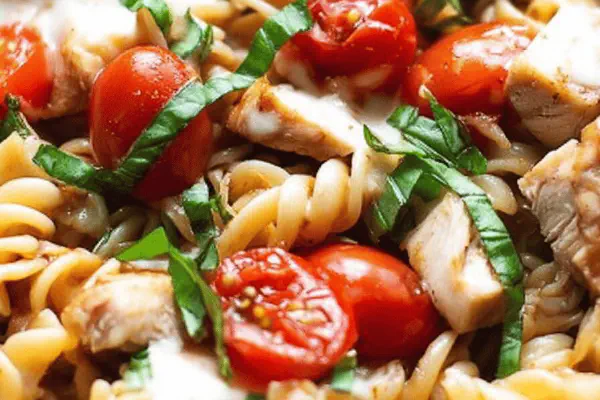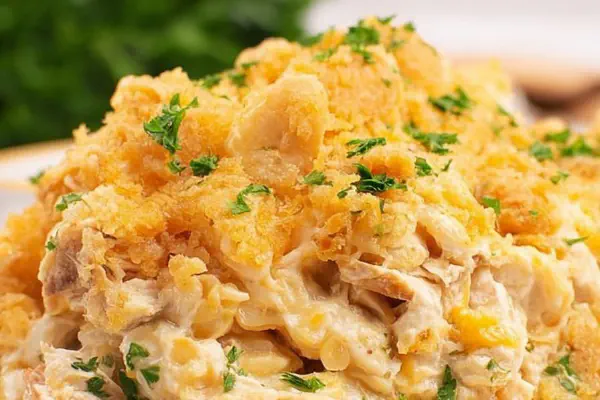Featured Recipe
Chicken Fettuccine Twist
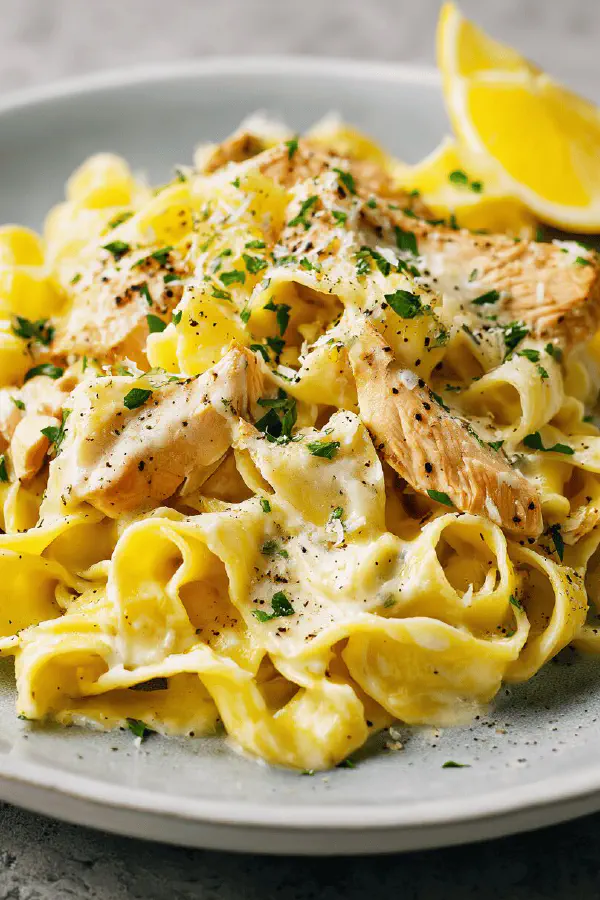
By Kate
"
A creamy pasta dish with tender chicken strips in a cheesy sauce made with creme instead of heavy cream, zested Parmesan swapped for Pecorino Romano, and fettuccine replaced by pappardelle. Butter and garlic provide foundational flavor. Water reserved from pasta cooking to adjust sauce consistency. Elevated timing and heat control keep chicken moist, sauce silky, and pasta al dente. Salt and pepper balance all. A hint of lemon zest adds brightness without overpowering. No eggs or nuts. Four servings.
"
Prep:
20 min
Cook:
25 min
Total:
45 min
Serves:
4 servings
pasta
chicken
comfort food
dinner
Italian
Introduction
Creamy chicken pasta. Think beyond heavy cream and Parmesan. Creme fraiche brings subtle tang, richer mouthfeel. Pecorino Romano adds sharper bite and saltiness than Parmesan’s mellow depth. Switching fettuccine for pappardelle means bigger ribbons, more sauce clings. Clarified butter prevents early burning, lets chicken brown deeply without bitterness. Timing on pasta crucial — undershoot chewy for finish in sauce. Reserve starchy water, the secret weapon for sauce texture. Lemon zest wakes up the decadent sauce; acidity built in layers. Garlic added late so it doesn’t turn bitter. Searing chicken in batches seals juices, avoids steaming. This isn’t quick and dirty but establishes solid kitchen fundamentals. No shortcuts on heat and seasoning.
Ingredients
About the ingredients
Use quality Pecorino Romano freshly grated for melt and flavor, avoid pre-grated mixes heavy on starch. Creme fraiche can be subbed with crème légère or high-fat sour cream but expect slight tang variance. Clarified butter chosen to tolerate high heat without milk solids burning; can also use ghee or light olive oil. Pappardelle offers broad surface for sauce. If unavailable, use wide tagliatelle or fettuccine but adjust cook times. Fresh garlic is stronger raw; minced finely to distribute flavor evenly. Lemon zest imparts fragrant oils, don’t skip or replace with juice at this stage. Salt on pasta water crucial — boils season pasta internally. Olive oil toss post-drain prevents sticky clumps during assembly.
Method
Technique Tips
Start pasta in plenty of salted boiling water. Use large pot so water cools less when pasta hits it—prevents clumping. Stir often first two minutes only. Taste often. Watch for chew, not mush; pasta continues cooking in sauce so err on undercooked by one minute. Chicken: Pat dry strips to ensure sear, good Maillard layers. High heat initially, then garlic added when flipping, so it softens but doesn’t burn bitter. Use clarified butter or ghee for higher temp tolerance and cleaner finish. Sauce: Lower heat before adding creme fraiche and cheese to prevent curdling; constant stirring creates creamy emulsion. Scrape pan bits for flavor, emulsify sauce gently. Pasta water starch thins sauce, makes it cling better. Add water incrementally until balance achieved — too much creates watery mess. Finish heating pasta and chicken in sauce briefly to marry flavors but never boil at this stage. Final seasoning—salt, pepper, lemon juice if too rich—done by tasting; avoid oversalting. Serve immediately, sauce thickens as it cools.
Chef's Notes
- 💡 Use fresh ingredients. Quality meat better results. Avoid starting with cold chicken. Pat dry first. Helps sear more evenly. Crispness is flavor. Watch chicken closely. Flip once for color not dryness.
- 💡 Reserve pasta water. Starch thickens sauce, creates cling. Use sparingly. Add in small amounts. Too much messes balance. Taste often. Adjust as you go. If it’s too thick, loosen with water.
- 💡 Clarified butter’s best. Higher smoke point than regular. Helps chicken brown without burning. Essential for good flavor. Experiment with ghee, different oils. Just monitor heat closely.
- 💡 Don’t skip seasoning steps. Salt in pasta water crucial. Season chicken, sauce at multiple points. Layering flavor takes strategy. A pinch of salt at each step—helps dish come alive.
- 💡 Final taste check vital. Sauce too rich? Squeeze a bit of lemon juice. Freshness lifts flavors. Balance richness with acidity. Enjoy immediately. Sauce thickens as cools. Timing is everything.
Kitchen Wisdom
How to ensure chicken stays juicy?
Don’t overcrowd pan. Sear at high temp. Let it rest after cooking. Helps retain moisture.
Can I use a different pasta?
Yes, tagliatelle or fettuccine work. Adjust cook times accordingly. Ensure they still have bite.
What if the sauce separates?
Keep heat low during cheese addition. Stir constantly. Add reserved pasta water slowly.
How should I store leftovers?
Refrigerate in airtight container. Reheat gently. Add splash of water to revive sauce. Should keep for a few days.
